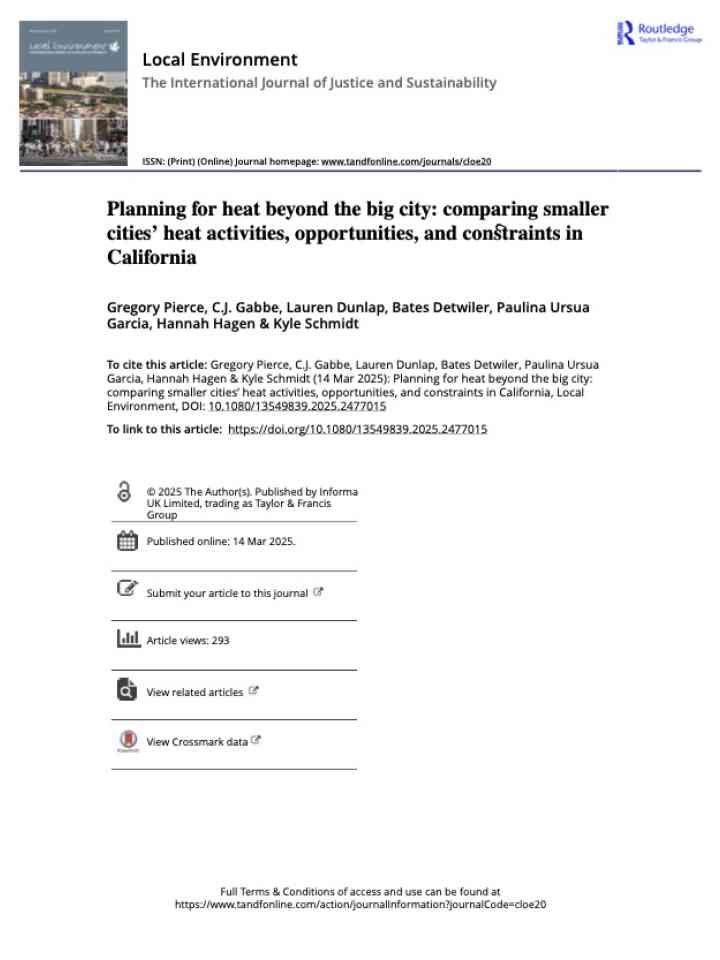Planning for heat beyond the big city: Comparing smaller cities’ heat activities, opportunities, and constraints in California
This study examines how small- and medium-sized cities in California—specifically in northern Los Angeles County and the southern San Joaquin Valley—are planning for extreme heat, an increasingly urgent consequence of climate change. It explores how these municipalities integrate heat-related concerns into formal planning documents like General Plans, Climate Action Plans, and Hazard Mitigation Plans. The researchers employ a mixed-methods approach, combining content analysis of 58 cities’ planning documents with 17 interviews and 10 email responses from city planners and other local officials. The study is grounded in structuration theory, which posits that smaller cities operate under unique constraints and opportunities compared to larger urban centers.
The research finds that while most smaller cities acknowledge extreme heat as a concern, their actual planning efforts are often limited in scope, focus, and implementation. Tree planting and shade structures are the most common adaptation strategies, but these are not always explicitly tied to heat resilience. Interviews reveal a general lack of technical capacity, dedicated staffing, and funding, especially in lower-income municipalities. Many planners expressed interest in expanding heat adaptation but cited regulatory, bureaucratic, and financial barriers. The study highlights the need for increased state-level support, both financial and technical, to help smaller cities better prepare for intensifying heat events.
Explore further
